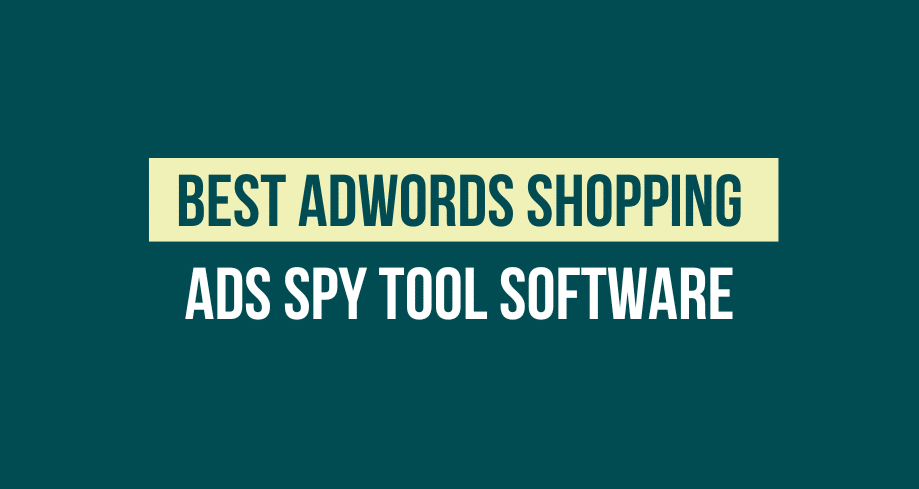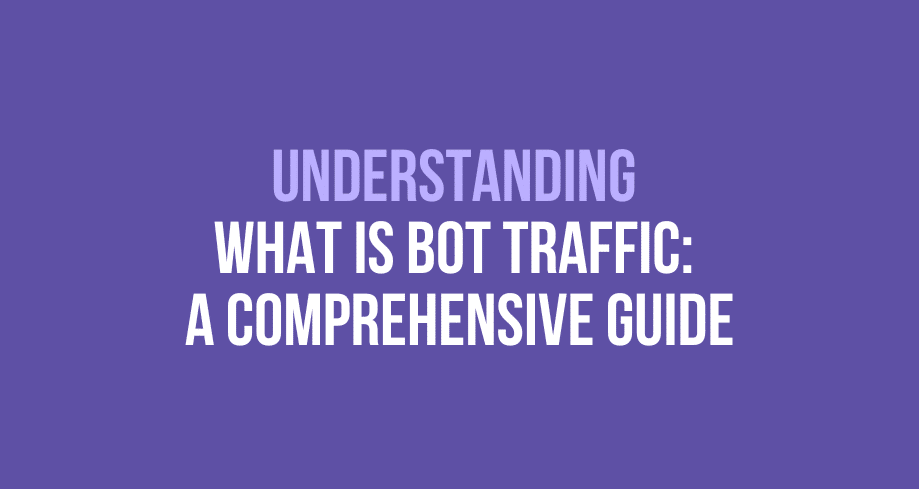There are a lot of different AdWords spy tools software on the market these days. It can be tough to figure out which one is the best for your business. In this article, we will compare and contrast some of the most popular options so that you can make an informed decision. We will also discuss some of the benefits of using a spy tool and how it can help you improve your campaigns. Interested in this topic? Read our article on PPC vs Adwords
What are Shopping Ads?
Shopping Ads, often referred to as Product Listing Ads (PLAs) are a type of online advertisement that promotes specific products from an online or physical retailer. It is a form of paid search marketing for eCommerce websites and retailers. Shopping Ads can appear on web pages, apps, social media channels, and search engine result pages.
A Shopping Ad typically contains the product’s image, title, price, store name, and other details such as its features or rating. They generally link to the product’s page on the retailer’s site. When a user clicks on an ad they will be directed to the merchant’s website or a page within it where they can purchase that product.
Shopping ads have become increasingly popular due to their ability to increase brand exposure, drive traffic to merchant websites and increase sales. They also provide more targeted exposure than more traditional forms of advertising like television commercials or magazine ads. Shopping ads can target potential customers in specific geographic areas or even those who are searching for certain keywords related to the products being advertised. This makes them highly relevant for potential buyers and thus increases sales conversions for retailers who are using them properly.
How to Find Your PPC Competitors
Finding your PPC competitors is essential for success in the online marketing sphere. The more you know about who’s competing with you, the better equipped you are to craft strategies for outbidding them and driving more traffic and sales to your site.
The primary step to finding your PPC competitors starts with keywords. By researching and analyzing the keywords used by competitors in their campaigns, you can gain insights into how they’re targeting users. Tools such as Google Trends and the AdWords Keyword Planner can help you get a better understanding of what market segments they’re going after. You can also use Google Search Console to look at who’s showing up in organic search results for relevant queries. Additionally, consider using a third-party tool like iSpionage or SEMrush to uncover more information about specific campaigns that are running in your industry.
It’s also important to carefully review ad copy used by your PPC rivals, as this provides valuable insight into what messaging resonates with users in your target market. Look closely at how they position their business offering versus yours and take note of features or benefits they offer that you may not be aware of. Furthermore, look at landing pages and other related content used by these competitors – this can give you ideas for improving on what already exists and forming an even stronger presence in SERPs (Search Engine Result Pages).
Moreover, review the ads of competitors from different industries – if there’s a keyword that appears multiple times across different verticals, it could be worthwhile incorporating those terms into your own campaigns. Similarly, check out competitor display ads – seeing what images or visuals capture attention can provide clues for design elements that should be included in yours. Finally, don’t forget to research bidding strategies employed by every one of your competitors – this will help inform decisions about where best to allocate the budget when creating/enhancing a campaign.
Why Do You Need to Analyze Your Competitor’s Shopping Ads Strategy
Analyzing your competitor’s shopping ads strategy is essential to staying competitive and successful in the marketplace. By understanding what strategies they are using and how they are optimizing their campaigns, you can gain valuable insight into how you can optimize your own ad campaigns and stay ahead of the competition.
Competitor analysis can provide information on the types of keywords, creatives, and products that are performing well for them and can be used to inform your own strategy. Additionally, analyzing competitors’ ads is a great way to discover trends in the industry and uncover new opportunities for growth. This can include identifying which channels or platforms have the highest ROI or have seen an increase in engagement recently, as well as revealing which products are selling better than others.
On top of this, it’s important to also analyze competitor spending patterns so that you know at which level you should set your budgets to remain competitive. Knowing when competitors launch new campaigns or invest more heavily in particular markets allows you to adjust your own strategies accordingly. This ensures that you don’t become overly reliant on one type of campaign or platform or miss out on any potential opportunities within certain markets.
Why Do You Need a Shopping Ads Spy Tool
A shopping ads spy tool is an invaluable asset for any eCommerce business. With the ability to track competitor advertising campaigns, analyze ad copy and keywords, identify the targeted audience, and find new opportunities for growth, a shopping ads spy tool can help businesses maximize their return on investment (ROI).
Having access to a shopping ads spy tool helps eCommerce businesses stay ahead of the competition. By being able to identify what other companies are doing in terms of advertising campaigns and which strategies are working best, it’s much easier to develop a plan that will generate higher ROI than competitors.
Using a shopping ads spy tool also allows businesses to uncover new target markets they weren’t aware of before. By tracking competitor campaigns and analyzing who they’re targeting with those campaigns, it’s possible to discover underserved markets that may have huge potential for growth. This could mean the difference between success and failure when it comes to getting more customers and making more sales.
In addition, having access to data about competitor marketing strategies helps businesses create better campaigns that stand out from the competition. With insights into what works—and what doesn’t—it’s possible to create more effective campaigns that yield better results.
Google Shopping Ads Spy Tools
Google Shopping ad spy tools are essential for any business looking to maximize their return on investment (ROI) from their shopping campaigns. With these tools, businesses can track, analyze and optimize the performance of their Google Shopping Ads in real time. This allows them to quickly identify areas of opportunity and make data-driven decisions that could result in higher sales and more efficient spending.
These tools provide important insights into the performance of an ad campaign by tracking key metrics such as cost per click (CPC), the average cost per thousand impressions (CPM), cost per acquisition (CPA), conversion rate, bounce rate, and much more. This provides businesses with a clear view of how effective their ads are performing and where they need to focus in order to optimize their campaign. In addition, these tools allow businesses to quickly identify which products are generating the highest returns on investment so they can strategically allocate resources toward those products that have proven most successful.
The Benefits of Google Shopping Ads
Google Shopping Ads allows you to target customers who are already interested in your products.
– You can control your budget, and only pay when someone clicks on your ad.
– Shopping ads show up at the top of the page, above all other search results.
List of Top Shopping Ads Advertisers
1. Amazon
One of the top shopping ads advertisers, Amazon offers a wide variety of products and services to shoppers around the world. From books to electronics, appliances, beauty supplies, clothing and accessories, home furnishings, food products, and more, Amazon advertising campaigns are designed to reach shoppers across multiple platforms and channels. Their ad targeting capabilities enable advertisers to reach relevant audiences with precise targeting options such as age range, gender, or interests. Additionally, with their smart shopping campaigns feature and custom bids for every product listing, Amazon gives advertisers the ability to optimize their spending on a granular level.
2. eBay
With one of the largest selections of items available online, your ads can be seen by millions on eBay’s platform each day. They offer several ways for you to advertise including sponsored product ads (displayed alongside search results), promoted listings that appear above organic results based on relevance, display banners in strategic locations on the site for maximum visibility, and more. With eBay’s sophisticated ad targeting algorithms and real-time bidding system, you can enjoy higher conversions from your campaigns.
3. Walmart
As one of the biggest retailers in the US market (and other international markets) Walmart is also one of the top shopping ads advertisers around today. You can use various ad formats such as display banners or sponsored product ads (on the Walmart website) or create targeted audience-based campaigns using Walmart’s proprietary data management platform “Walmart Ads” which utilizes customer segmentation data to reach shoppers who are more likely to convert on your products or services offered via Walmart marketplace.
4. Target
A retail giant with a presence in multiple countries including the US and Canada; Target is also among the top shopping ads advertisers today with its dedicated Target Ads program built specifically for brands looking to connect with customers through its digital channels like search engines, social media platforms and partner sites like Google Shopping Actions (GSA). Target Ads offers an array of features such as advanced retargeting capabilities that allow you to serve up personalized ads across devices based on people’s past interactions with your brand; detailed reporting features; promotions & discounts engine; detailed performance tracking & optimization tools plus much more!
5. Best Buy
As one of America’s leading electronics retailers, Best Buy also offers a comprehensive advertising program for brands looking to increase sales via its online store bestbuyadspros.com where marketers can create text/image/video-based display advertisements within Best Buy’s network of online properties that are optimized for mobile devices too! Additionally, Best Buy supports Local Product Advertising which enables you to target customers near specific stores so they can shop at nearby physical locations instead of buying online from other vendors – a great way to boost local in-store sales!
Questions to Ask While Analyzing Competition for PPC Ads
- What keywords are my competitors targeting?
- What ad copy is my competition using?
- What position are my competitor’s ads appearing in?
- Are any of my competitor’s ads above the fold?
- Which sites are linking to my competitors’ websites?
Questions While Analyzing Competitor’s PPC Landing Pages
When analyzing a competitor’s PPC landing pages, it is important to ask critical questions that will help reveal what strategies the competitor is utilizing and how successful those strategies are. The following are some important questions to consider:
- What keywords and search terms are the competitor targeting? This can be determined by looking at the content on the landing page and other external data. Analyzing their organic search rankings can also provide valuable insight into their keyword strategy.
- How effective is their copywriting? Is it engaging, persuasive, and optimized for SEO? Do they use persuasive techniques such as storytelling or emotion-based language to increase conversions? These factors should be considered when evaluating a competitor’s PPC landing page.
- Are there any unique features or offers on the page that could be leveraged in our own campaigns? It’s important to look for anything that stands out and take note of how they’re presenting it so we can use similar tactics in our own campaigns.
- Is there an effective call-to-action (CTA) present? What kind of CTA does the competitor use? Does the CTA contain persuasive language and tactics that would convince customers to act quickly? Comparing the effectiveness of CTAs between competitors can help determine which CTA works best for our target audience.
- How does their landing page design look across different devices and browsers? Does it feature a responsive design or an adaptive design? Does it have elements such as pop-ups, sliders, etc.? Understanding how well-designed a landing page is can give us an idea of how successful it may be with users across different devices.
- How much traffic is the landing page receiving compared to other pages on the website? Identifying this information provides insights into where people are likely spending more time on the website, so we can focus our efforts accordingly.
- What kind of tracking mechanisms do they have in place? Are they tracking key performance indicators (KPIs) such as conversions, revenue per visitor, etc.? Examining what types of measurements they’re tracking will allow us to see exactly what’s working for them so we can replicate those same results in our own campaigns.
Best PPC Spy Tools
Here is a list of some of the Best PPC Spy Tools that can provide invaluable data and insights for both businesses and marketers alike:
1. Adbeat
As one of the leading competitive keyword research tools available on the market, Adbeat provides comprehensive reports on a variety of different ad formats, such as native ads, display ads, video ads, and more. It also offers detailed insights into competitors’ PPC campaigns, including budget information and keyword targeting data. Additionally, users can even compare performance metrics across different campaigns in order to get an accurate view of their competitor’s performance.
2. SpyFu
Another great tool for market researchers is SpyFu which provides detailed information on advertisers who are bidding on keywords related to your industry or niche. With this tool you can monitor any changes made to competitors’ PPC campaigns in real-time, allowing you to stay ahead of them every step of the way. Additionally, SpyFu also provides helpful advice from their team of experts on how best to optimize your own campaigns in order to gain greater success over time. Check out Spyfu’s pricing
3. Wordstream
Wordstream is a powerful research tool for those looking for a deeper level of understanding of their competitors’ activities within the realm of search engine optimization (SEO). This tool not only provides a detailed analysis of competitors’ activity but also offers up suggestions for improving upon established SEO strategies or tactics based on current trends in the marketplace. Furthermore, Wordstream offers advice from its expert staff members so that users get the most out of their research efforts and campaigns overall.
4. WhatRunsWhere
WhatRunsWhere provides invaluable insight into what campaigns are currently running within particular industries by providing users with detailed breakdowns regarding each company’s ad placements across top digital publishers like Google Adwords, Bing Ads, and Yahoo Gemini among many others. It also offers comparative pricing data so that businesses can adjust their budgets accordingly while staying competitive in the marketplace at large.
5. SEMRush
Predominantly focused on organic traffic analysis rather than PPC specifically, SEMRush nevertheless remains an essential resource when it comes to uncovering useful information surrounding your competitors’ online marketing activities as it provides access to historical keyword search volume metrics as well as a number of other powerful features related to website analytics & optimization metrics tool.
Best Landing page tool for spying on competitors
One of the best tools for spying on competitors’ landing pages is Hotjar. This tool offers comprehensive insights into how visitors interact with your competitor’s website or landing page. It provides heatmaps and visitor recordings that can reveal user behavior, such as how long visitors stay on a particular page or what actions they take before leaving. You can also see where people click and use this information to optimize or shape your own landing pages to increase conversions.
Another great tool for spying on your competitors is SimilarWeb. With SimilarWeb, you can compare website traffic data between your and your competitors’ sites in order to identify opportunities for improvement or target new audiences with appropriate keywords and content strategies. The platform also pulls visitor demographic information, which can give you great insight into your competitor’s customer base and help you understand who their ideal buyer persona is.
Crazy Egg is another excellent tool for understanding user behavior on competitor sites. This program allows users to create heatmaps that show where visitors focus their attention when viewing a page, what sections they’re spending time on and more useful metrics about the journey a visitor takes after arriving at a given webpage.
Free Display Network Spying Tools
The free display network spying tools available on the web are incredibly useful for digital marketers who are looking to gain insights into their competitors’ advertising strategies. These tools allow users to view mobile ads that their competitors are running, analyze their ad copy and visuals, monitor their progress over time, and even compare campaign performance across different networks.
For instance, many of these PPC keyword spying tools offer features such as keyword monitoring, budget tracking, and bid analysis. They also allow users to filter search results by country, language, or device so they can target their advertising efforts accordingly. This is especially helpful for those who need more granular information about a competitor’s campaigns in a particular area or market.
Another great feature of some of these display network spying tools is the ability to track creative assets used by competitors in their social media ads. This includes images, videos, text elements, and call-to-action buttons that can be examined against one’s own materials for better optimization. Meanwhile, user segmentation capabilities enable businesses to analyze demographic data related to every ad impression they generate in order to better understand the effectiveness of their campaigns.
Preventing Your PPC Competitors From Spying On You
First and foremost, make sure that your PPC strategies and tactics remain a closely guarded secret. This means limiting access to key reports and data points, limiting who has access to this information within your organization, and keeping passwords secure. You also should ensure that any third parties you work with sign nondisclosure agreements to prohibit them from disclosing any confidential information about your campaigns.
Second, regularly monitor search queries for signs of google ads competitor analysis activity. Keep track of any queries related to the products or services you offer that are snaking up abnormally or have a high volume of impressions during particular times of day or days of the week. It could be an indication that a competitor is testing out different strategies on their own PPC ads campaign in order to gain an edge over yours.
Third, use cloaking techniques when setting up your campaigns. Cloaking involves making small adjustments such as variations in text ad copy and bid amounts that can help keep competitors off balance when they try to guess what kind of Google ads campaign you’re running based on visible statistics. Cloaking also helps cut down on ad fatigue since it makes it harder for competitors to spot trends in how you may adjust bids based on certain conditions (time of day, device type, etc.).
Frequently Asked Questions
What are the best Google ads spy tool?
The best ad spy tool available today is AdSpy.
How to spy on Google Ads?
One way to spy on Google Ads is to use a tool called SpyFu.
Is Ad Tracking legal?
Under current US law, Ad Tracking is legal when certain conditions are met. Specifically, websites must obtain prior consent from users before collecting their data, and they must provide transparency regarding how they intend to use it. Additionally, they must allow users to opt-out of any tracking that takes place on their site or app. Despite these legal requirements, there are still instances in which companies violate their user’s rights by not adequately disclosing the purpose for collecting their data or failing to give them the option of opting out.





